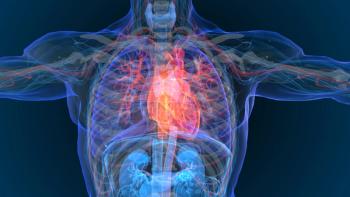
NLA 2025: The Complementary Roles of ANGPTL3 and ANGPTL4 in Lipid Regulation and Therapy
Sander Kersten, PhD, discusses the distinct roles of ANGPTL3 and ANGPTL4 in lipid metabolism, their interactions with key enzymes, the therapeutic potential of targeting these pathways in lipid-lowering strategies, and important considerations for pharmacists counseling patients on emerging ANGPTL-targeted therapies.
As new therapies targeting lipid metabolism continue to emerge, understanding the distinct roles of angiopoietin-like protein 3 (ANGPTL3) and angiopoietin-like protein 4 (ANGPTL4) is critical for pharmacists counseling patients on complex lipid-lowering regimens. Pharmacy Times® interviewed Sander Kersten, PhD, director of the Division of Nutritional Sciences and the Schleifer family professor of molecular nutrition at Cornell University, on the complementary functions of ANGPTL3 and ANGPTL4, their interactions with key enzymes such as lipoprotein lipase (LPL) and endothelial lipase (EL), and the therapeutic potential of ANGPTL inhibitors in addressing residual cardiovascular risk.
Pharmacy Times: Could you explain the distinct roles of ANGPTL3 and ANGPTL4 in regulating lipid metabolism, and how do these proteins interact with key enzymes such as LPL and EL?
Sander Kersten, PhD: Both proteins prevent the removal of triglycerides from the bloodstream and uptake into tissue by inhibiting the enzyme LPL. ANGPTL3 also inhibits EL.
ANGPTL3 is produced exclusively by the liver and mainly regulates lipid metabolism after a meal (fed state). It functions as an endocrine factor by being secreted by the liver and has its primary effect on the adipose tissue.
ANGPTL3 is released by liver cells bound to the protein ANGPTL8. By binding to ANGPTL8, ANGPTL3 becomes a stronger inhibitor of LPL.
ANGPTL4 is produced in multiple tissues (including liver, muscle, fat tissue, heart etc) and is mainly active after fasting. Similar to ANGPTL3, ANGPTL4 functions as an endocrine factor but it also acts locally in fat tissue, heart, muscle, etc. ANGPTL3 and ANGPTL4 complement each other.
Pharmacy Times: Are there any notable differences in the mechanisms by which ANGPTL3 and ANGPTL4 affect lipid metabolism, and how might this influence therapeutic strategies targeting these pathways?
Kersten: ANGPTL3 functions as a complex with ANGPTL8, and this complex is a more potent inhibitor of LPL than ANGPTL3 alone. ANGPTL4 is a strong inhibitor of LPL by itself and does not need to form a complex with ANGPTL8 to inhibit LPL.
ANGPTL3 inhibits LPL and EL, whereas ANGPTL4 only inhibits LPL. As a consequence, ANGPTL3 inactivation lowers plasma high-density lipoprotein, low-density lipoprotein (LDL), and remnant cholesterol and triglycerides, whereas ANGPTL4 inactivation only lowers remnant cholesterol and triglycerides.
Since ANGPTL3 is only produced in the liver, therapeutic approaches that target the liver production of ANGPTL3 are sufficient to substantially lower circulating lipid levels. By contrast, targeting the liver production of ANGPTL4 is likely insufficient to get a substantial lowering of circulating lipid levels. Targeting the production of ANGPTL4 in multiple tissues (ie, liver and fat tissue) or targeting circulating ANGPTL4 is needed to achieve a substantial lowering of circulating lipid levels.
Pharmacy Times: Are there any emerging safety concerns or off-target effects associated with long-term inhibition of ANGPTL3 or ANGPTL4 that pharmacists should be aware of when counseling patients?
Kersten: There are no known safety concerns about the long-term inactivation of ANGPTL3. By contrast, long-term inactivation of ANGPTL4 has been shown to cause adverse effects (AEs) in mice and monkeys that were fed a diet high in fat. The AEs include the seemingly benign appearance of lipid-filled macrophages in the mesenteric lymph nodes (observed in mice and monkeys) and the development of a severe acute phase response and chylous ascites and peritonitis (observed in mice). These different clinical phenomena are likely unrelated to each other. Further, it is unclear whether the inactivation of ANGPTL4 triggers either of these phenomena in humans.
Human genetic studies indicate that carriers of inactive ANGPTL4 do not have a higher risk of lymphadenopathy and malabsorptive states. Hence, human genetic evidence (with its obvious limitations) suggests that long-term ANGPTL4 inactivation is safe in humans.
Pharmacy Times: How might ANGPTL3 or ANGPTL4 inhibitors be used in combination with existing lipid-lowering agents?
Kersten: ANGPTL3 and ANGPTL4 inhibitors would be used in conjunction with existing lipid-lowering therapies if these therapies don’t bring down lipid levels enough. Besides both lowering remnant cholesterol and triglyceride levels, ANGPTL3 inhibition has the advantage that it can lower LDL levels in the absence of a functional LDL receptor, while ANGPTL4 inhibition is associated with improvements in insulin resistance. ANGPTL4 inhibitors may thus be of particular benefit to patients with dyslipidemic type 2 diabetes.
Pharmacy Times: Do you foresee a role for ANGPTL3 or ANGPTL4 inhibitors in addressing residual cardiovascular risk in patients already on statin or PCSK9 therapy?
Kersten: I expect that ANGPTL3 and ANGPTL4 inhibitors will be used in conjunction with existing therapies if these therapies do not sufficiently bring down plasma lipid levels.
Pharmacy Times: What are the key differences in the clinical development pipelines for ANGPTL3 vs ANGPTL4 inhibitors, and how close are we to seeing ANGPTL4-targeting agents in clinical practice?
Kersten: At this stage, ANGPTL3 inhibitors have only been approved for homozygous familial hypercholesterolemia and ANGPTL4 inhibitors are still in clinical development. Notably, the clinical development of ANGPTL3 inhibitors has progressed faster than the clinical development of ANGPTL4 inhibitors. ANGPTL3 inhibitors (ie, monoclonal antibodies) have been on the market since 2021. ANGPTL4 inhibitors need a few more years before they are ready to be released.
Pharmacy Times: For pharmacists involved in patient education, how would you recommend explaining the mechanism of action of ANGPTL3 or ANGPTL4 inhibitors to patients who are unfamiliar with lipid metabolism concepts?
Kersten: ANGPTL3 and ANGPTL4 inhibitors ensure that fat is removed from the blood and stored. It is healthier for fat to be stored than to be present in the blood.
Newsletter
Stay informed on drug updates, treatment guidelines, and pharmacy practice trends—subscribe to Pharmacy Times for weekly clinical insights.




















































































































































































































